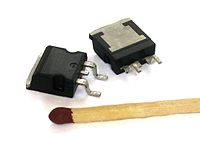
Photo from wikipedia
Abstract Background Food safety and food security remain the major concern of consumers and the food industry. Bacterial contamination continues to be a crucial food safety issue. Smart packaging incorporates… Click to show full abstract
Abstract Background Food safety and food security remain the major concern of consumers and the food industry. Bacterial contamination continues to be a crucial food safety issue. Smart packaging incorporates both active and intelligent components. Intrinsic antibacterial activity, oxygen and ethylene scavenging (active) and the sensing (intelligent) properties of metal oxide nanoparticles are in research focus for application in smart food packaging, especially bio-nanocomposite films. Scope and approach Metal oxide nanoparticle properties are closely linked to their morphology resulting from the synthesis process. In this review, we cover current innovative synthesis methods for obtaining metal oxide nanoparticles and current incorporation techniques used to obtain smart (active and/or intelligent) packaging, focusing on bio-nanocomposites, commonly used metal oxides and future mixed metal or doped metal oxides. Taking into account safety, we focus on current legislation, and methods for risk assessment due to particle release from the packaging material and a summary of cytotoxic studies of metal oxide nanoparticles on human cells and the gut microbiota. Key findings and conclusions Antimicrobial effectiveness of metal oxide nanoparticles is highly dependent on morphology as a result of the synthesis method. Solution casting and electrospinning are innovative methods applied to synthesize metal oxide incorporated biopolymer films for active packaging with improved mechanical and barrier properties combined with active components (antimicrobial, ethylene scavenging). Metal oxides show sensitivity and selectivity to most gases produced during food spoilage. In selection of metal oxide for smart packaging, particle migration and cytotoxic activity are key issues requiring careful and detailed characterization.
Journal Title: Trends in Food Science and Technology
Year Published: 2021
Link to full text (if available)
Share on Social Media: Sign Up to like & get
recommendations!